Jesse Scoble has the singular misfortune of being a good friend of mine. A Chief Narrative Designer at TenCent, he’s done stints at Ubisoft (HyperScape, Assassins’ Creed: Odyssey, Far Cry 5 and others) Wizard101, Webkinz and more. He has contributed to Beyond the Wall; The Bones; co-edited two short-story anthologies in the Silver Age Sentinels TTRPG setting; and co-edited James Hsu’s Humans of Magic. A resident of Montreal, he wants you all to know he makes a mean mojito.
And so without any further delay, I give you the multitalented Jesse Scoble:
 1-What’s it like putting together a narrative for a game like HyperScape that is by definition non-linear?
1-What’s it like putting together a narrative for a game like HyperScape that is by definition non-linear?
I see you want to start with a softball question. So. Coming to HyperScape (Ubisoft’s near-future, dystopian battle royale), we believed what would differentiate us from an already crowded field would be to have a strong story. Some games have virtually no story, or maybe they have a framing story (say a modern warzone) but have no real sense of character, while some have incredibly rich characters (Apex Legends, Overwatch) but relatively thin plot. We wanted to have all of that.
We needed to create a new world – and elected to set it about 30 years in the future, in 2054, which wasn’t necessarily realistic in terms of the virtual world – the eponymous HyperScape – and then come up with an overarching storyline that would drive the world forward. Much of that centered on the company that created the HyperScape, a global megacorporation called Primsa Dimensions, and the creators of the company, genius inventor Mathieu Eiffel and his savvy business partner, Dr. Ivy Tan. The machinations of Prisma Dimensions would be the engine that drove the story.
In terms of the “framing story” – and what I mean by that is essentially a narrative explanation for the battle royale concept – we chose to embrace the battle royale game concept directly, and define it as an extreme sport in the virtual world of the HyperScape. In the dystopia of 2054, it was the most popular way to gain fame and fortune. The characters would fight and kill to try to get ahead, but as it was just a virtual game, then there was no problem seeing someone “die” or for various characters to fight each other even though they were friends or on the same side outside the game.
Finally – and perhaps most importantly – we wanted the characters to have depth and flavor, and to have strong ties to the world of 2054. We wanted to have a large and ever-expanding roster that would let us create characters from all sorts of different backgrounds and walks-of-life, and we’d show how these characters evolved from season-to-season as the plot of the story moved forward.
Another core challenge was that, unlike a AAA console action/adventure game (say Assassin’s Creed or Far Cry or Spider-Man or Witcher or whatever), players would only get tiny snippets of the story. There wouldn’t be traditional quests and we’d have very few cinematics. We had to be smart in figuring out how to relay the story in a way that would be comprehensible to those who only lightly skimmed the surface but would have strong connections for those who wanted to dig deeper into the lore.
Our team also had a robust transmedia approach (can I still say “transmedia” in 2021? Whatever.): we had a deal with Dark Horse to create a HyperScape digital comic; we also worked with a great 3rd party company to create a couple of short animations, our “HyperScape Stories” that spotlighted characters like Ace and Basilisk; and of course we had our internal team building season trailers, in-game cinematics (such as the End of Season 1 event), and so forth.
Finally, the narrative and art team worked closely to create a dozen collectible “memory shards” that would be revealed over the course of the season. Each one had a piece of micro-fiction and an awesome piece of custom art, like a comic splash page or wallpaper screen. These really told the crux of the season’s story, allowing us to get into characters’ heads, feel the flavor of the world, and also conveyed the big moving pieces of the plot.
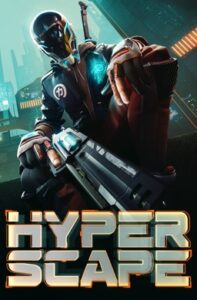 This meant a LOT of planning: how much info could we write into a character’s bio in the store? What would be consistent and change between different skins? What bio info would change from season-to-season? When was a character/skin going to be released DURING a season? What order would the memory shards be released? Could we do environmental storytelling on the game map that would link to the fiction? Where would the trailers or short movies come out? How do we tell an engaging story in the comic that links to everything else, but also feels self-contained?
This meant a LOT of planning: how much info could we write into a character’s bio in the store? What would be consistent and change between different skins? What bio info would change from season-to-season? When was a character/skin going to be released DURING a season? What order would the memory shards be released? Could we do environmental storytelling on the game map that would link to the fiction? Where would the trailers or short movies come out? How do we tell an engaging story in the comic that links to everything else, but also feels self-contained?
And – as you well know – in video games everything is always at a risk of moving. Things get delayed. A feature won’t work. Marketing throws you a curveball.
In the end, we made mistakes. Lots of mistakes. But we also succeeded to hit many of our goals, and learned a tremendous amount in the doing.
2-You have an extensive track record in tabletop RPGs. Ever thought about going back and doing more TTRPG work?
Yes, but no. It was extensive at one time, but I’ve been playing in the video game playground for three-quarters of my career now, so it feels like I haven’t done much in that space for ages. Hell, I worked on the first Game of Thrones RPG that was so long ago it was BEFORE season 1 of the HBO show.
TTRPGs are fun, but a helluva lot of work, in terms of research and organization and presentation. It’s hard enough putting together a halfway decent game for my local group, let alone something that’s publishable quality.
I’ve gone back to the well a few times in the past semi-recent years. I was a consultant on the short-lived Marvel Heroic RPG (from Margaret Weis Productions), with some luminaries in the industry, and that was a treat. I was invited to contribute to two different projects – one was a setting for Robin Laws’ DramaSystem called Narcocorrido; and then I revisited some of that material “through a neon lens” for Mark Richardson’s neocyberpunk RPG, Headspace (Carteles Unidos, in the Dystopian Dreams supplement), both of which were obviously inspired by my time living in Austin, TX. I’ve also contributed a few essays here and there, and co-edited a series of interviews with top-tier Magic players for a good friend.
These days, due to limited time and focus, I need to be really intrigued by a project to carve out the time for it. It either has to be a project where I have a lot of creative freedom and some degree of ownership, or something that is just so cool I can’t say no. That said, I have yet to actually do anything official for Dungeons & Dragons or Warhammer 40K, two IPs that I’d happily make the time to delve into (just throwing that out there in case the universe is listening).
Oh, and I have a brilliant idea for how to make an RPG out of HADES, the superb rogue-like from Supergiant games, in case anyone knows anyone over there.
3-What’s the most challenging aspect of game writing for you?
All of it? I realize that’s a useless answer.
I think it’s trying to impart the “perfect picture” in my head to paper, and then have the rest of the team understand it. It’s so elegant and clear in my mind’s eye (well, hardly ever that, but it’s certainly better than whatever I end up scrawling on the page), and there’s so much of a gap that is created between the act of putting pen to paper, and then again between the person reading it and implementing the ideas. And this gap widens when dealing with challenges of language and distance.
At their worst, when gameplay and art and recording limitations are all dragging you down it can feel like the death of a thousand cuts. But the corollary is that when it all somehow hangs together – when the gameplay supports the narrative (and vice versa) and the art is glorious and the voice acting adds that je ne sais quoi nuance, it can create a magical experience for the player. And I live for that.
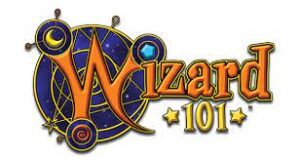 4-What’s your favorite part of the job when it comes to game writing?
4-What’s your favorite part of the job when it comes to game writing?
Seeing these fifty(thousand) different moving parts that like-as-not won’t fit properly together or work well together or might not even work at all somehow come together miraculously and gel. It’s seeing those scribbles on the screen become real and extant, in a way that makes people engage and act. It’s creating both the big moments and the small moments, and when it works it makes people feel something. That’s the heart of it.
In particular, hearing/watching actors take the words on paper and breathe life into them is a kind of magic.
Perhaps most importantly, it’s getting to work with some incredibly smart, bright, funny, kind, talented and clever people.
5-You’re working on your first novel. How has that experience been different from game writing?
What do they say? “Writing is the easiest thing… you just stare at the blank page until your forehead bleeds.”
It’s… hard. I look back at random Facebook memories and realize how bloody long I’ve been on this road, and there’s no real end in sight (I keep thinking I see light ahead, but I’m pretty sure it’s just an oncoming train.)
First, because I can’t do anything simply, I decided for my first real attempt at a novel to co-write it with a close friend. And that’s been great. Also hard as sin. But having two heads to process ideas, encourage and cajole when the other side just doesn’t want to pick up a pen, bringing far more ideas and experiences than a single person – it’s like working with a teensy-tiny team. (Well, not “like.”)
(And we have a third friend who has been the alpha reader for all of our ideas throughout this long and twisty process. Having a ‘built-in’ story-editor, of sorts, has been a godsend.)
But it’s hard. It was a big idea (for me, at least), and structurally complicated, and cutting edge – several and more years ago when we first thought about it. And the future doesn’t hold back. The realities of online culture, and such like, keep moving and evolving in ways I wouldn’t have considered. It’s not dated – yet – but if I don’t hurry up and finish it, it soon will be.
It’s also very lonely, despite having two friends involved so closely. And it’s hard to know what the right paths are for the characters, at times, to get to where I want to get.
It’s taught me a lot about organizing my work and ideas, outlining and structuring a story, and developing character voices. Not all of which I’ve mastered yet, despite professionally writing for too many years now. And, as mentioned, a whole lot of time has passed since we first conceived of this story. I like the characters too much to want to abandon them, but it’s hard to say how and when I’ll finish this story satisfactorily, even if just for a limited audience.
A huge thank you to Jesse for his thoughtful and engaging answers. Tune in next week when I’ll have another writer in the hot seat!
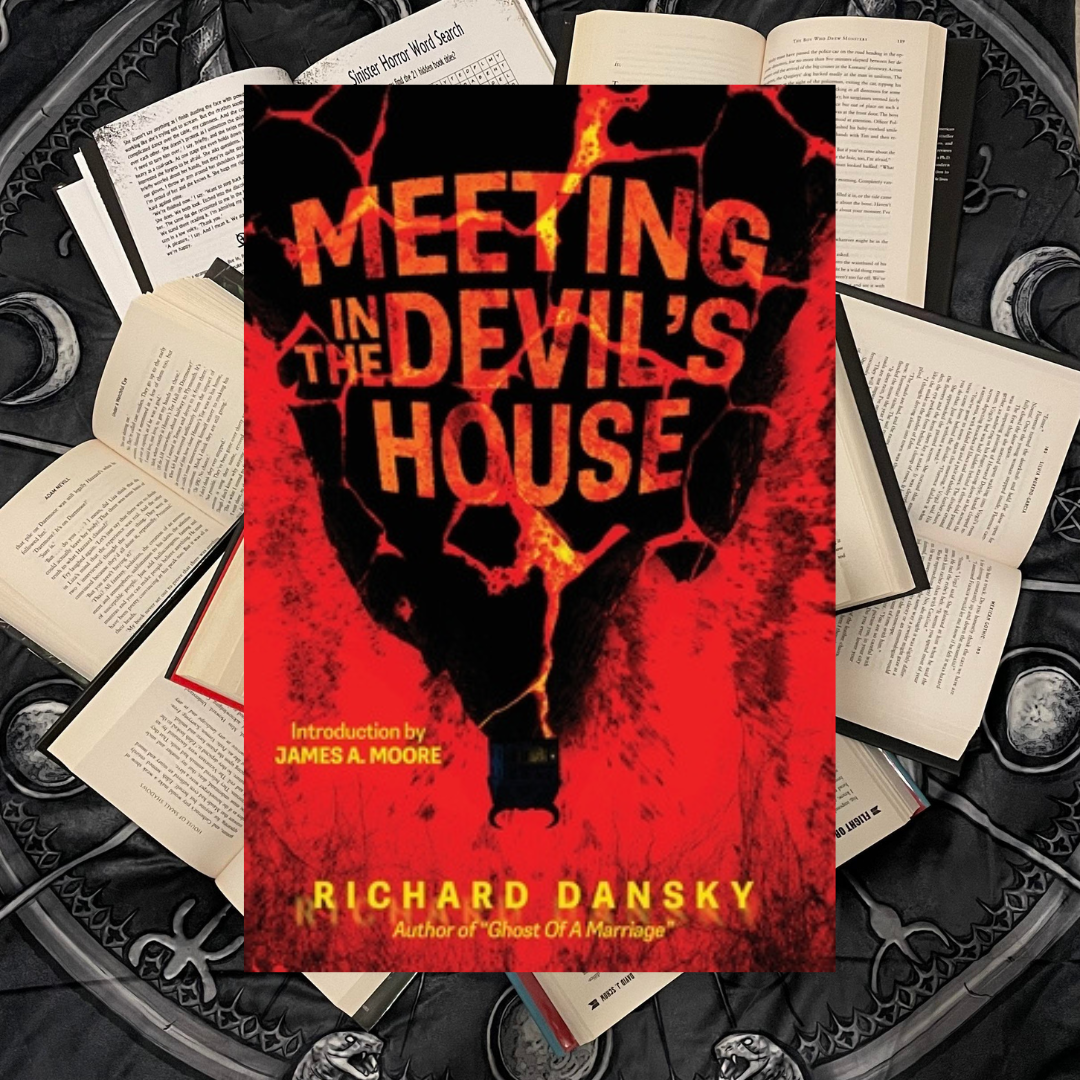
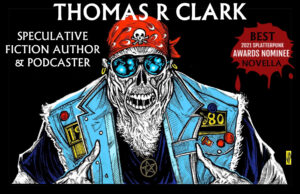 1-Heavy metal and horror. What’s the connection?
1-Heavy metal and horror. What’s the connection? 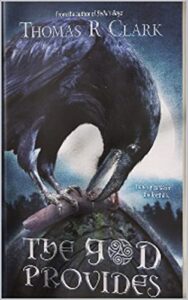
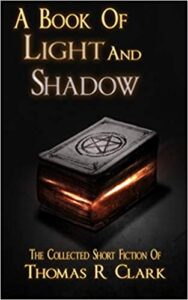 5-How does your podcasting relate to your writing?
5-How does your podcasting relate to your writing? 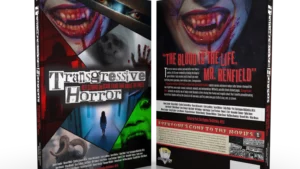 1-What’s a Ghost Show, and why did you name your press after it?
1-What’s a Ghost Show, and why did you name your press after it? 1-What says good game writing to you?
1-What says good game writing to you? As we explore new regions, we meet new people and all of those people have rich histories and backstories that made them who they are and how they react to the situation at this point. We get the privilege of learning more about established characters by meeting people we’ve never met before and getting their perspective on the state of the world and what our characters have represented to them based on how they have been treated by agents of the Division or individual interactions with our established characters. We will be learning more about many of our established characters in future content releases over the next year and I’m excited to see how the community responds to the new information they get about these people they think they already know. The funny thing about people is we are always much more complicated than expected and unless you directly ask someone why they do a thing and they answer honestly, you can never truly understand someone’s motivations or reasons for behaving the way they do. As long as people are complex and your characters are built like real people, you will never run out of potential stories you can tell about them.
As we explore new regions, we meet new people and all of those people have rich histories and backstories that made them who they are and how they react to the situation at this point. We get the privilege of learning more about established characters by meeting people we’ve never met before and getting their perspective on the state of the world and what our characters have represented to them based on how they have been treated by agents of the Division or individual interactions with our established characters. We will be learning more about many of our established characters in future content releases over the next year and I’m excited to see how the community responds to the new information they get about these people they think they already know. The funny thing about people is we are always much more complicated than expected and unless you directly ask someone why they do a thing and they answer honestly, you can never truly understand someone’s motivations or reasons for behaving the way they do. As long as people are complex and your characters are built like real people, you will never run out of potential stories you can tell about them. The same way I approach all narrative design. I look at the constraints as opportunities. All we have is barks, which means all we have is character. We have ambient audio to build the map, we tell a fixed story in the map. We use the art to build the world. We use the textures and marketing to ground the characters. Multiplayer live games in general are not built to tell a single player narrative experience. That is not the goal. A lot of the stories in games that are traditionally elevated as being amazing are really screenplays with combat beats. The richest and most complex stories are in games that are much more complicated than that. But I think people still expect the game to fit in a screenplay format, especially for award shows. We need to retrain people on what qualifies as story. It’s not just the cinematics. Especially when you can hold A to skip. It’s the content you engage with regardless of how expensive or long you engage with it. The small moments are the things that people remember. The weird lines and characters or a stunning piece of art. A moment that is real and evocative and makes you feel something and helps you better understand the world is a great piece of story, even a piece of graffiti that lets you know the True Sons are here, get ready, can be a wonderful and necessary story that helps the player engage more fully with the world.
The same way I approach all narrative design. I look at the constraints as opportunities. All we have is barks, which means all we have is character. We have ambient audio to build the map, we tell a fixed story in the map. We use the art to build the world. We use the textures and marketing to ground the characters. Multiplayer live games in general are not built to tell a single player narrative experience. That is not the goal. A lot of the stories in games that are traditionally elevated as being amazing are really screenplays with combat beats. The richest and most complex stories are in games that are much more complicated than that. But I think people still expect the game to fit in a screenplay format, especially for award shows. We need to retrain people on what qualifies as story. It’s not just the cinematics. Especially when you can hold A to skip. It’s the content you engage with regardless of how expensive or long you engage with it. The small moments are the things that people remember. The weird lines and characters or a stunning piece of art. A moment that is real and evocative and makes you feel something and helps you better understand the world is a great piece of story, even a piece of graffiti that lets you know the True Sons are here, get ready, can be a wonderful and necessary story that helps the player engage more fully with the world. 1-What’s it like putting together a narrative for a game like HyperScape that is by definition non-linear?
1-What’s it like putting together a narrative for a game like HyperScape that is by definition non-linear? This meant a LOT of planning: how much info could we write into a character’s bio in the store? What would be consistent and change between different skins? What bio info would change from season-to-season? When was a character/skin going to be released DURING a season? What order would the memory shards be released? Could we do environmental storytelling on the game map that would link to the fiction? Where would the trailers or short movies come out? How do we tell an engaging story in the comic that links to everything else, but also feels self-contained?
This meant a LOT of planning: how much info could we write into a character’s bio in the store? What would be consistent and change between different skins? What bio info would change from season-to-season? When was a character/skin going to be released DURING a season? What order would the memory shards be released? Could we do environmental storytelling on the game map that would link to the fiction? Where would the trailers or short movies come out? How do we tell an engaging story in the comic that links to everything else, but also feels self-contained?  4-What’s your favorite part of the job when it comes to game writing?
4-What’s your favorite part of the job when it comes to game writing?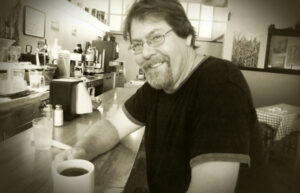 Alex Bledsoe’s Tufa novels are some of the finest modern fantasy out there. If you haven’t read them, they’re a treat and you owe it to yourself to pick them up. He also was part of the collective that wrote for Transgressive Horror: Reflections on Scare Films that Broke the Rules, which is where our paths crossed. He was kind enough to sit down for five questions about the Tufa novels, vampires in Memphis, and why all horror movies are transgressive. Without further ado, I give you Five For Writing with Alex Bledsoe.
Alex Bledsoe’s Tufa novels are some of the finest modern fantasy out there. If you haven’t read them, they’re a treat and you owe it to yourself to pick them up. He also was part of the collective that wrote for Transgressive Horror: Reflections on Scare Films that Broke the Rules, which is where our paths crossed. He was kind enough to sit down for five questions about the Tufa novels, vampires in Memphis, and why all horror movies are transgressive. Without further ado, I give you Five For Writing with Alex Bledsoe.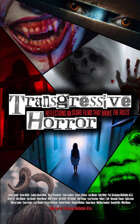 All good horror films should be transgressive in some sense; it’s in their nature. The point of horror is to expose the viewer to images and ideas they would never encounter elsewhere, and to show the embodiment of those images and ideas as realistically as possible. The German cinemagoers lucky enough to see Nosferatu on its first release would have considered the vampire as a transgressive figure, a visual representation of something that broke so many social rules.
All good horror films should be transgressive in some sense; it’s in their nature. The point of horror is to expose the viewer to images and ideas they would never encounter elsewhere, and to show the embodiment of those images and ideas as realistically as possible. The German cinemagoers lucky enough to see Nosferatu on its first release would have considered the vampire as a transgressive figure, a visual representation of something that broke so many social rules.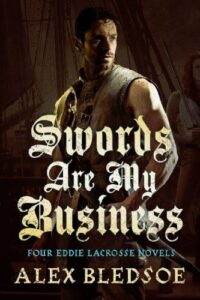 4-Your Eddie LaCrosse series is fantasy noir. Why mix those two genres?
4-Your Eddie LaCrosse series is fantasy noir. Why mix those two genres?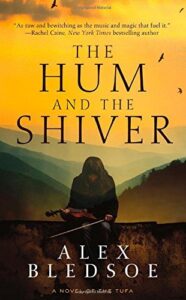 5-The Tufa novels feel deeply personal. Where did they come from, and will we see more of them?
5-The Tufa novels feel deeply personal. Where did they come from, and will we see more of them?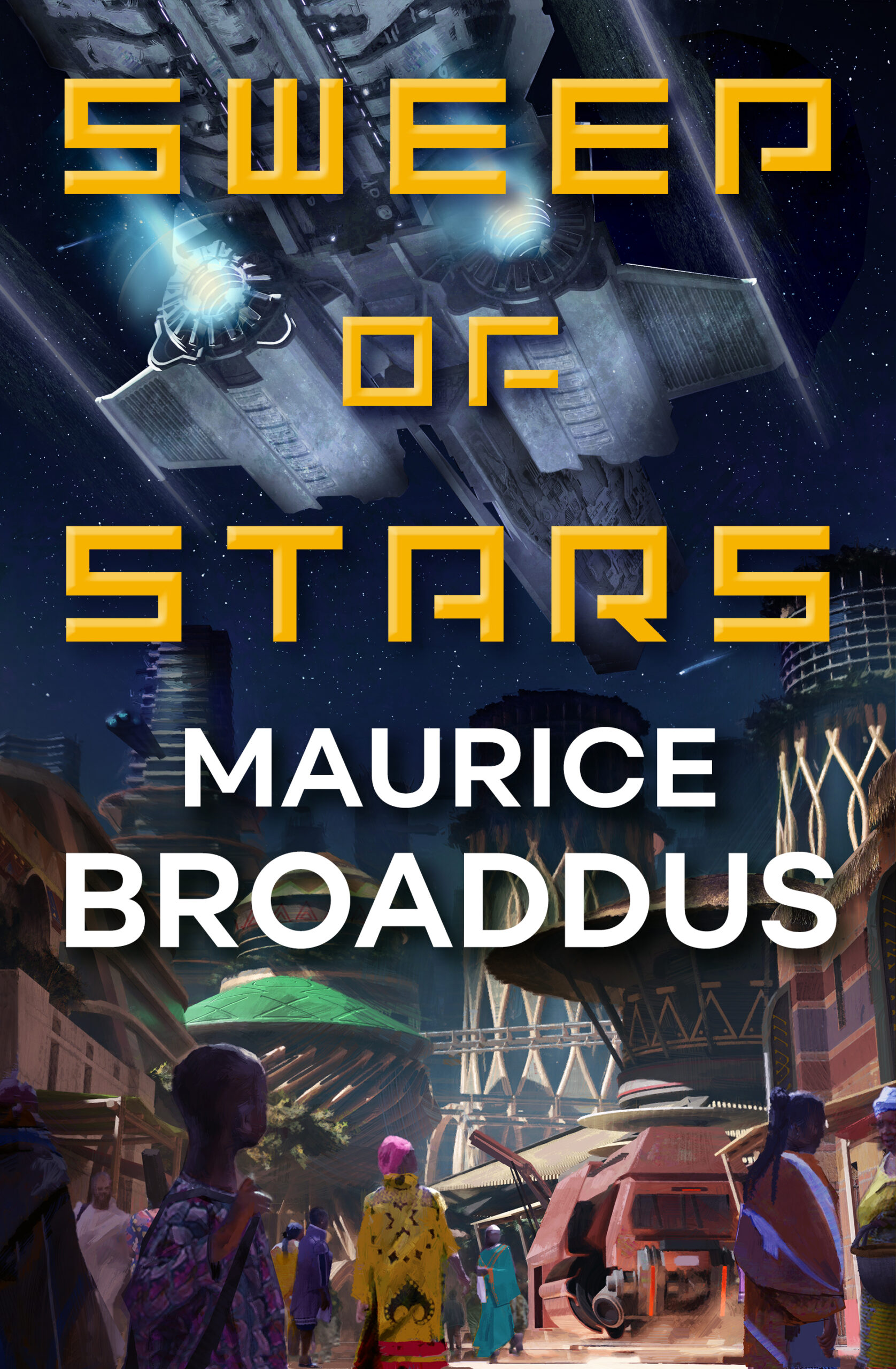 1-How exactly does one
1-How exactly does one 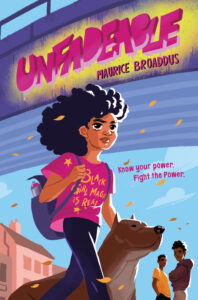 4-Religion is a strong theme in your life. How do you see it affecting your fiction?
4-Religion is a strong theme in your life. How do you see it affecting your fiction?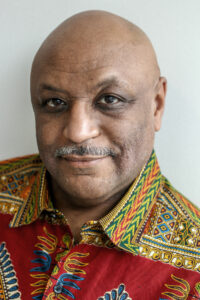 5-You do a lot of community outreach. How is your writing bound up in that?
5-You do a lot of community outreach. How is your writing bound up in that?